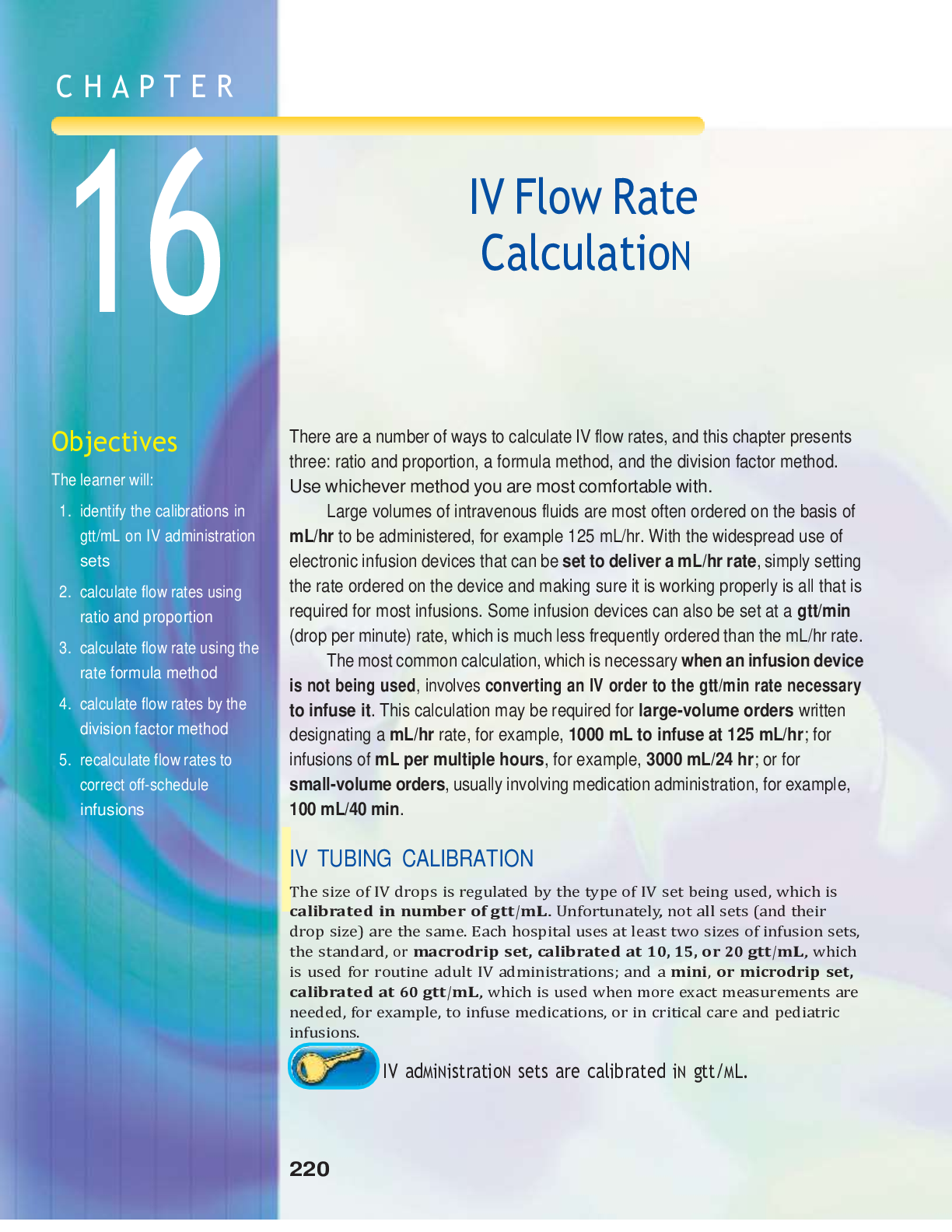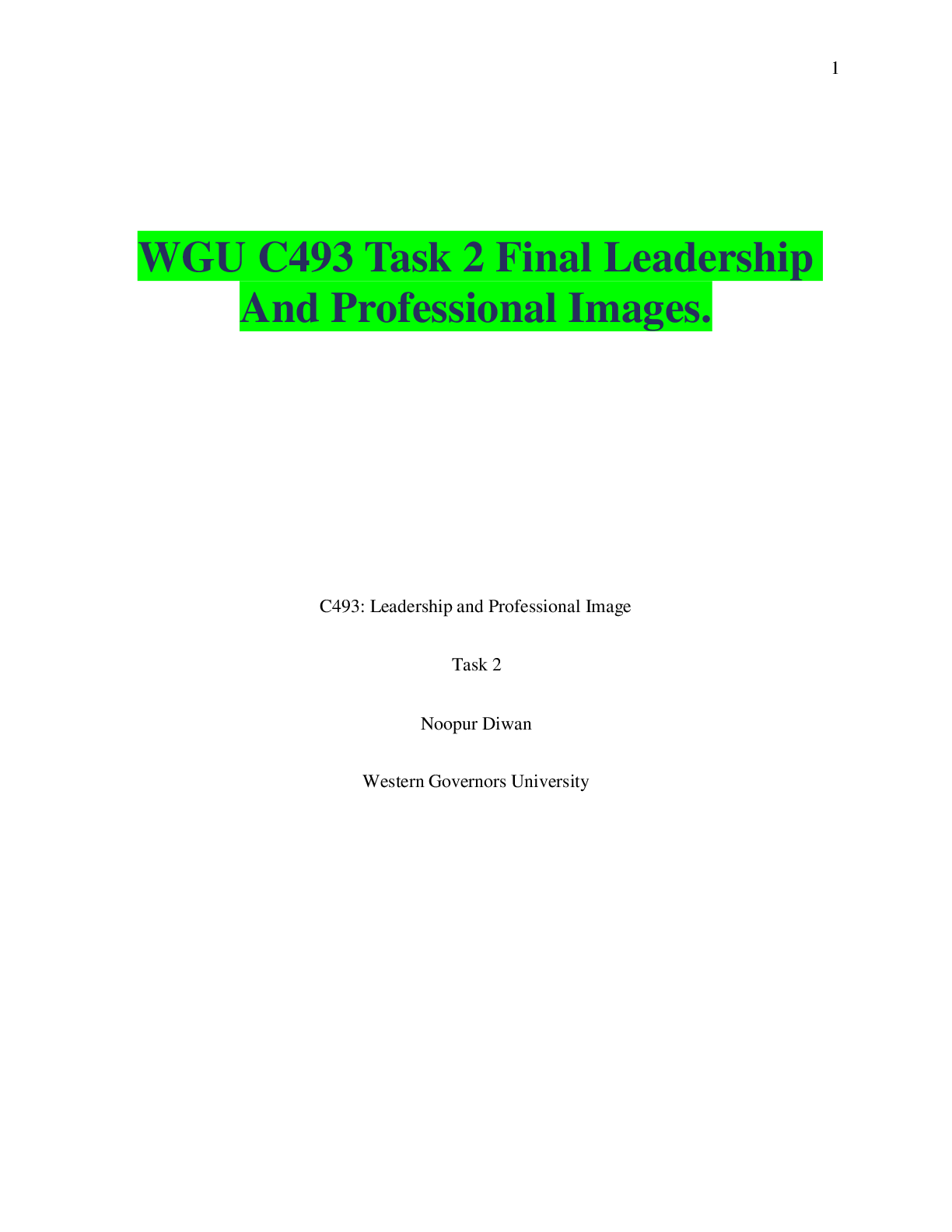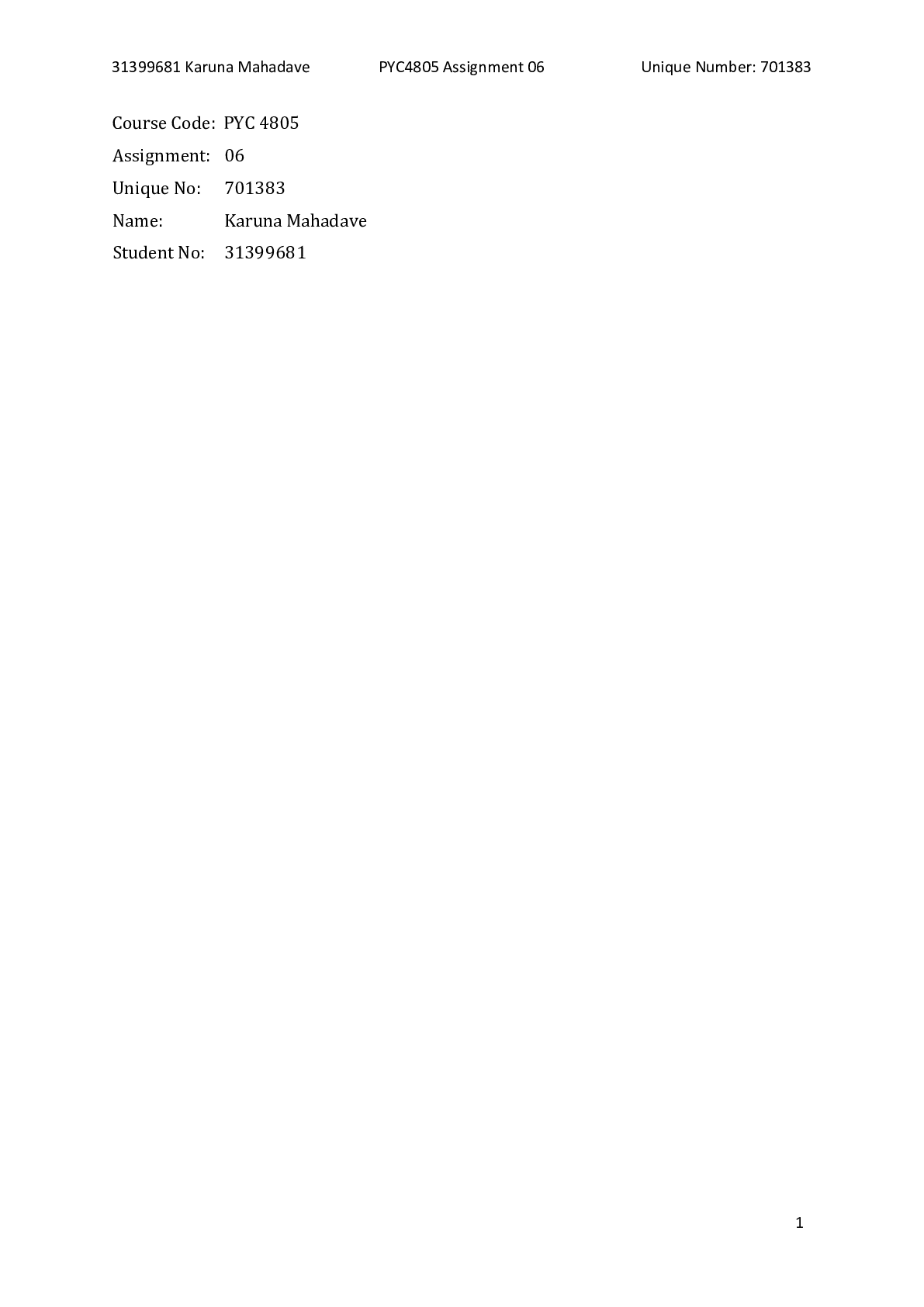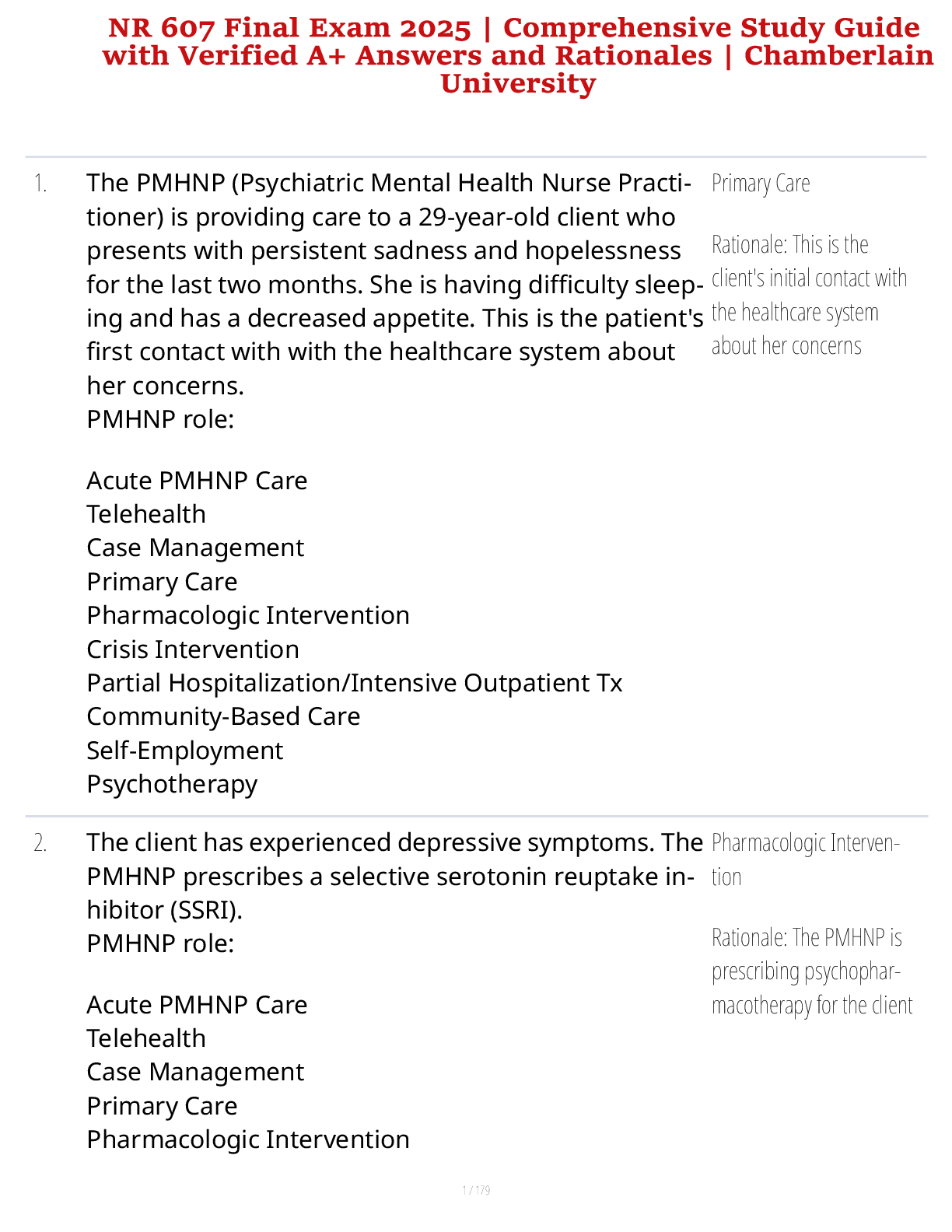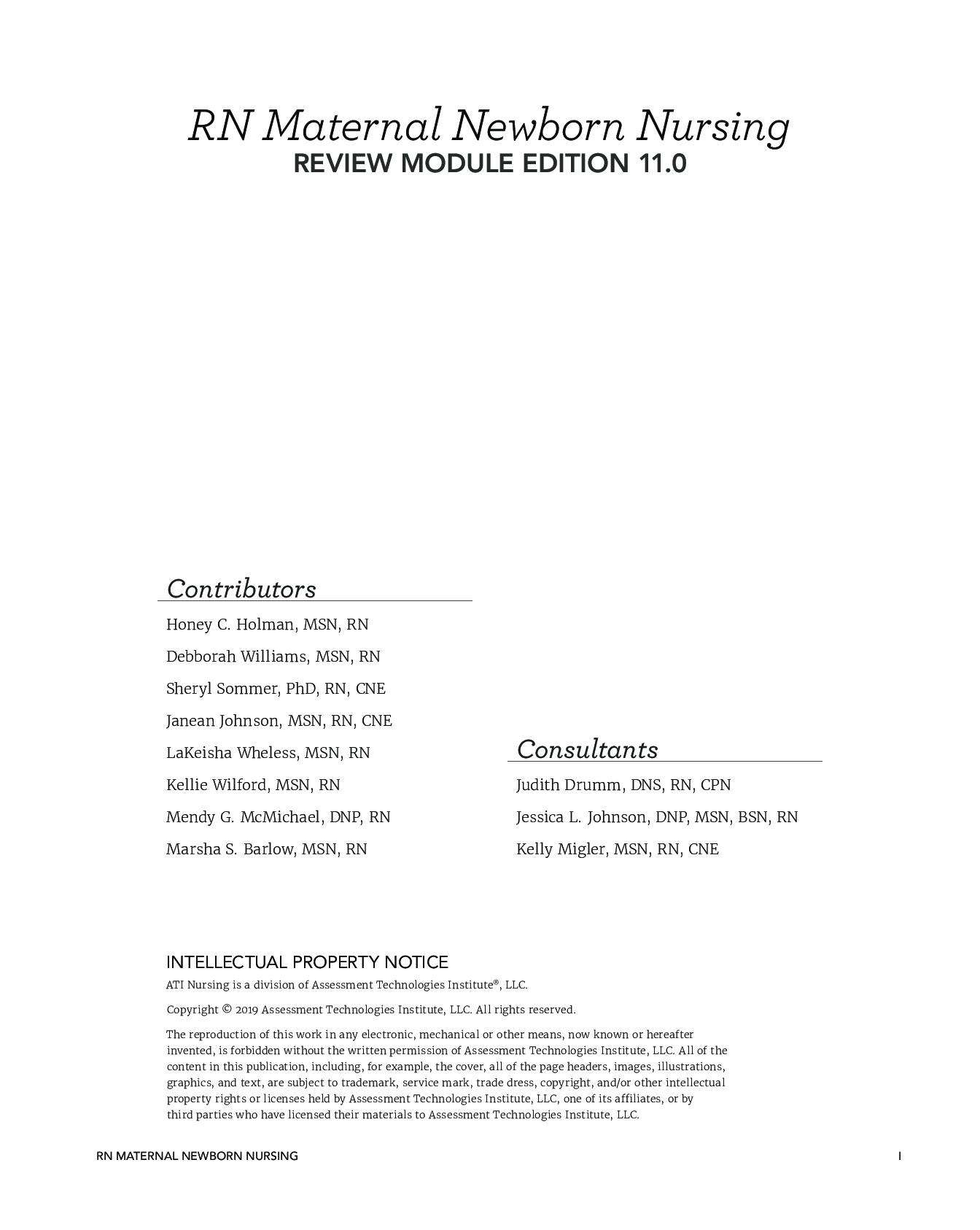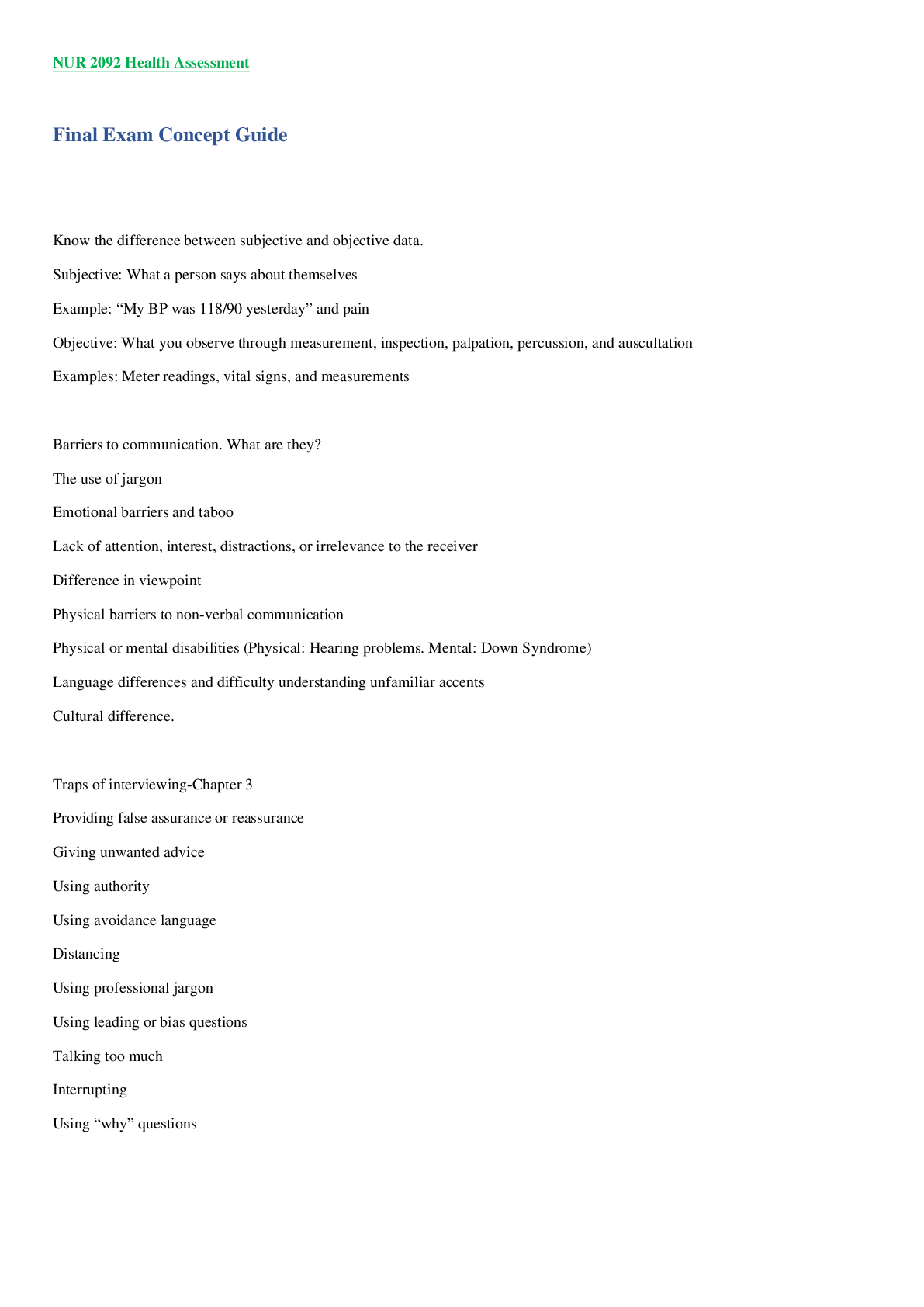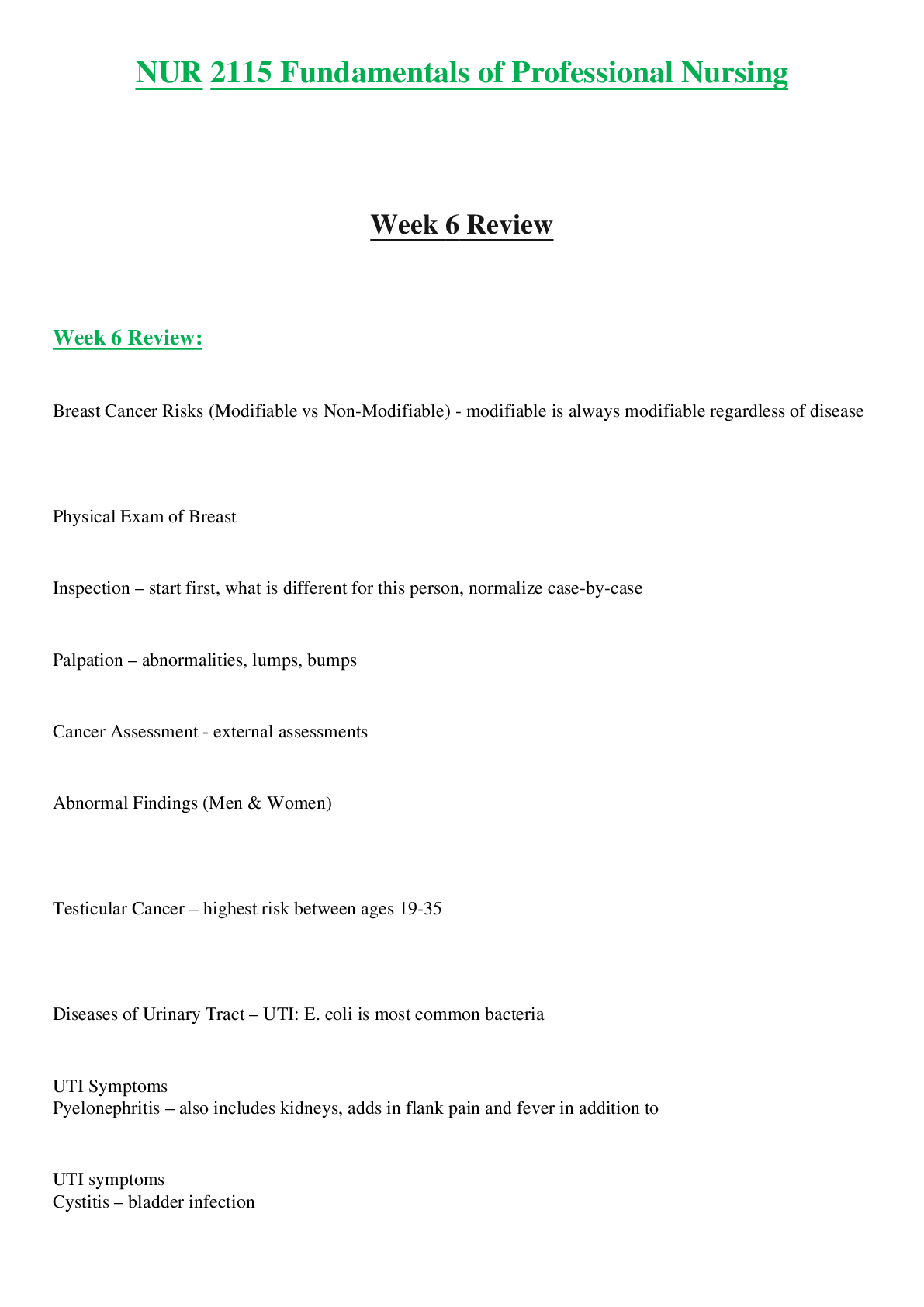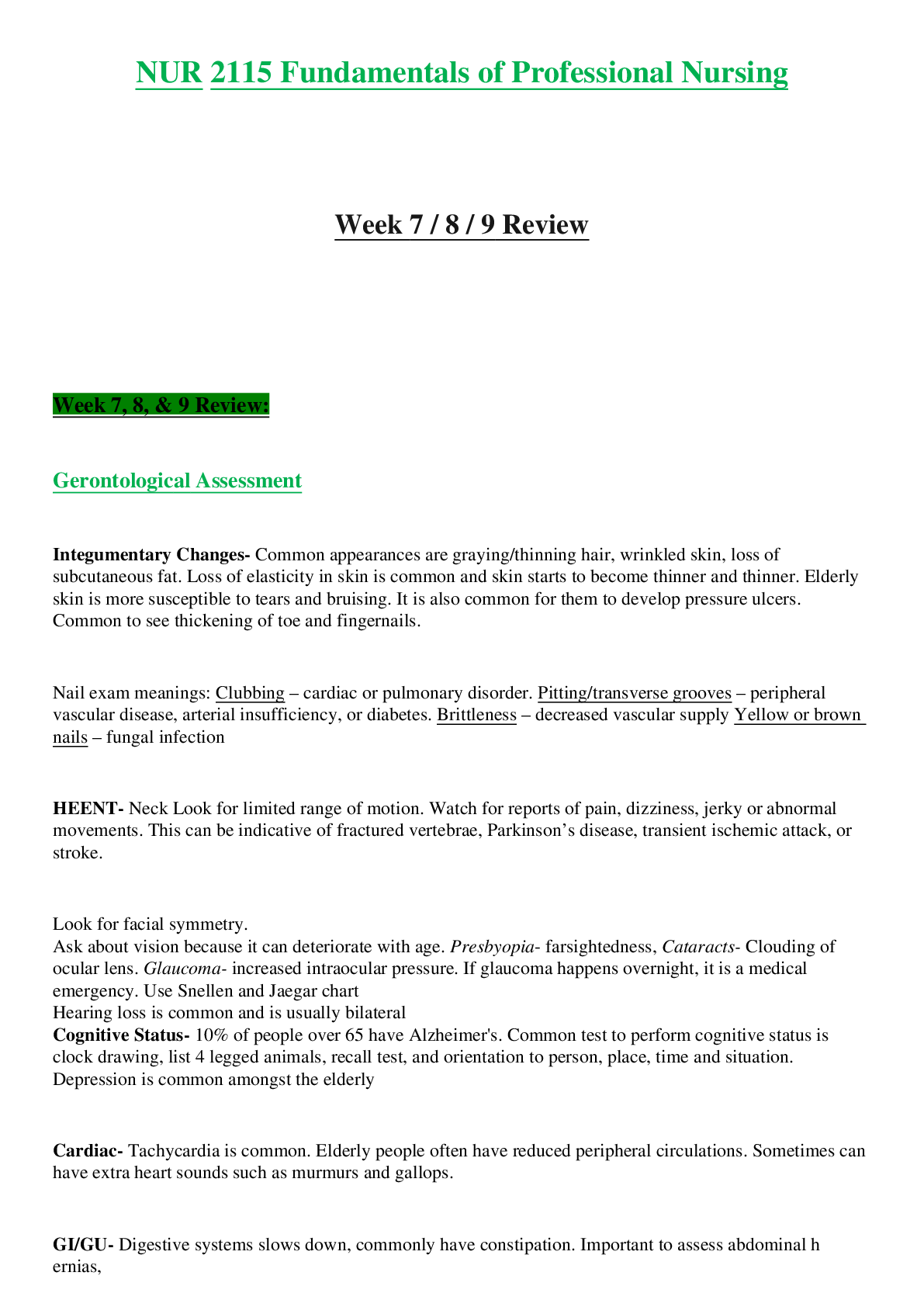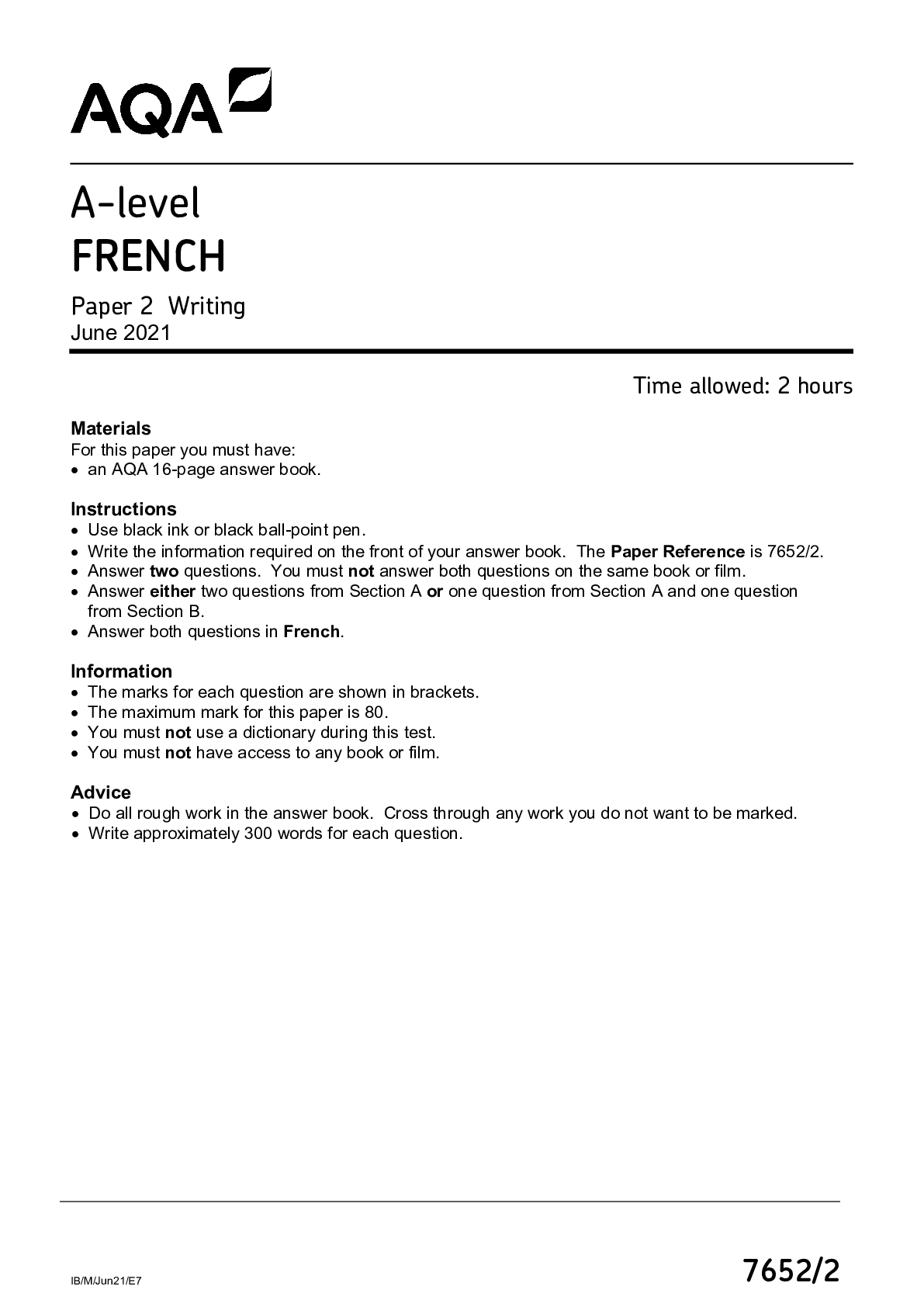
AQA A LEVEL FRENCH PAPER 2 WRITTING JUNE 2021
$ 7

AAA Driver's ED: Sample Tests Questions and Answers Graded A
$ 19.5

NGRK 520 Beginner Greek 1 Exam 1 Questions and Answers- Already graded A.
$ 6.5
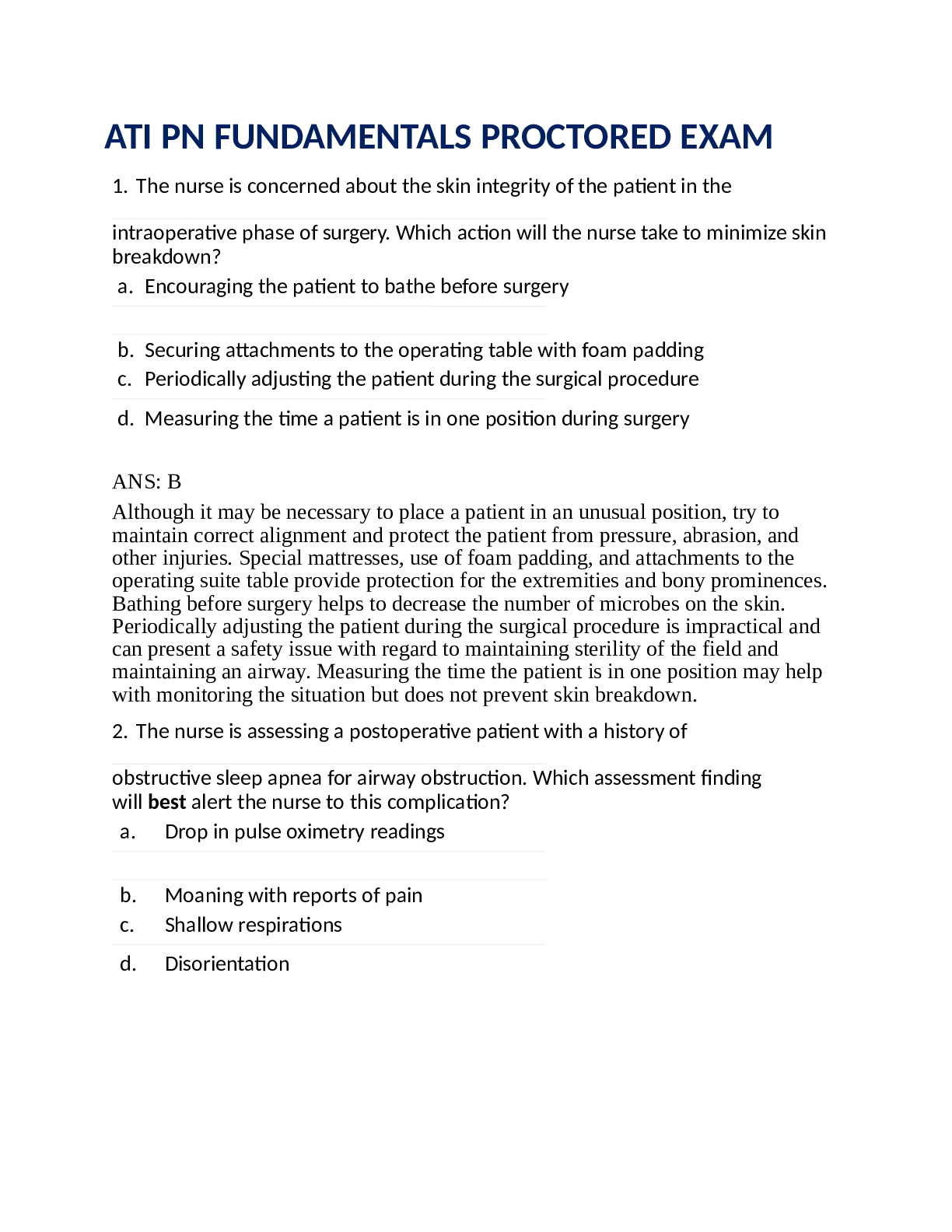
ATI PN FUNDAMENTALS PROCTORED EXAM
$ 9

Nursing 201 Final Exam Review 2022
$ 14
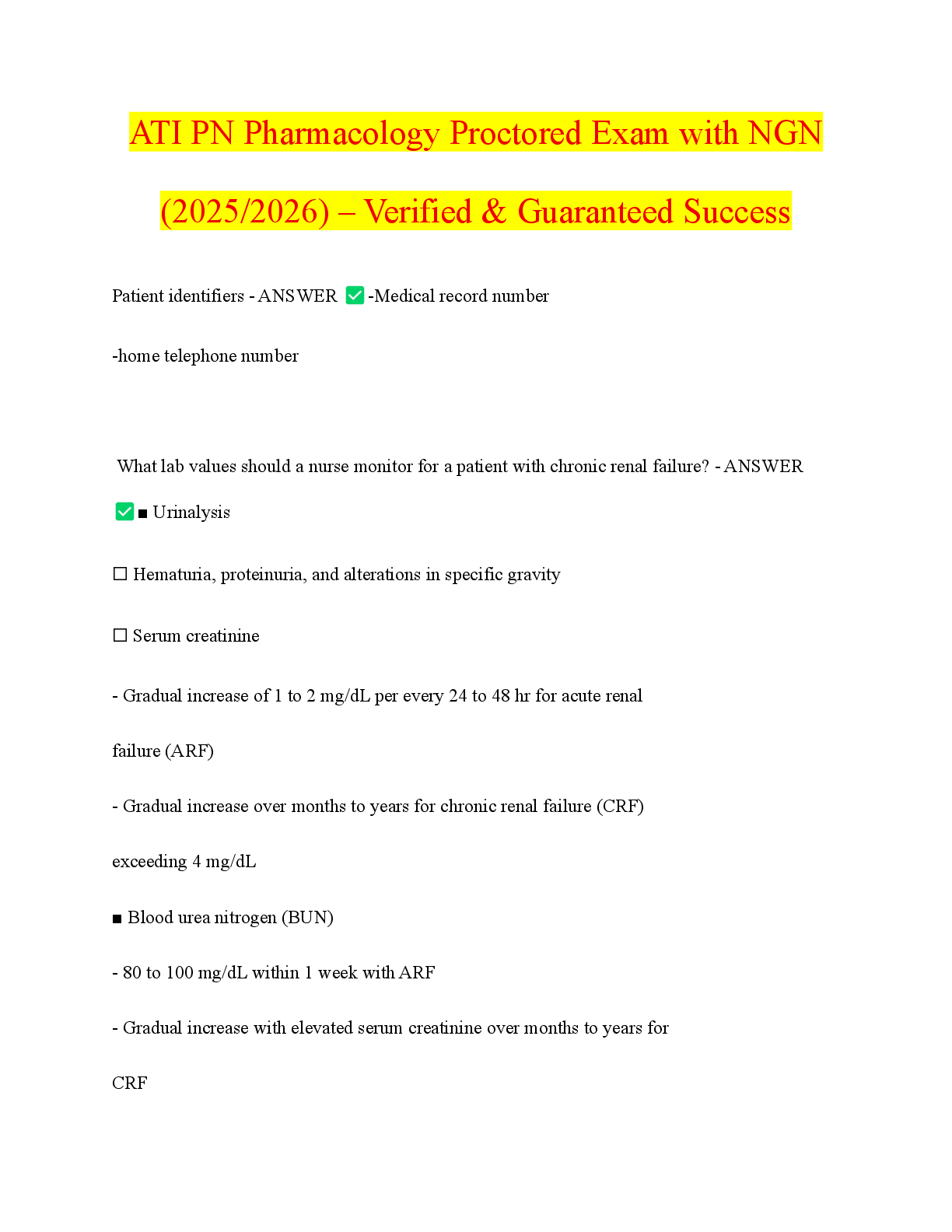
ATI PN Pharmacology Proctored Exam with NGN (2025/2026) – Verified & Guaranteed Success
$ 4
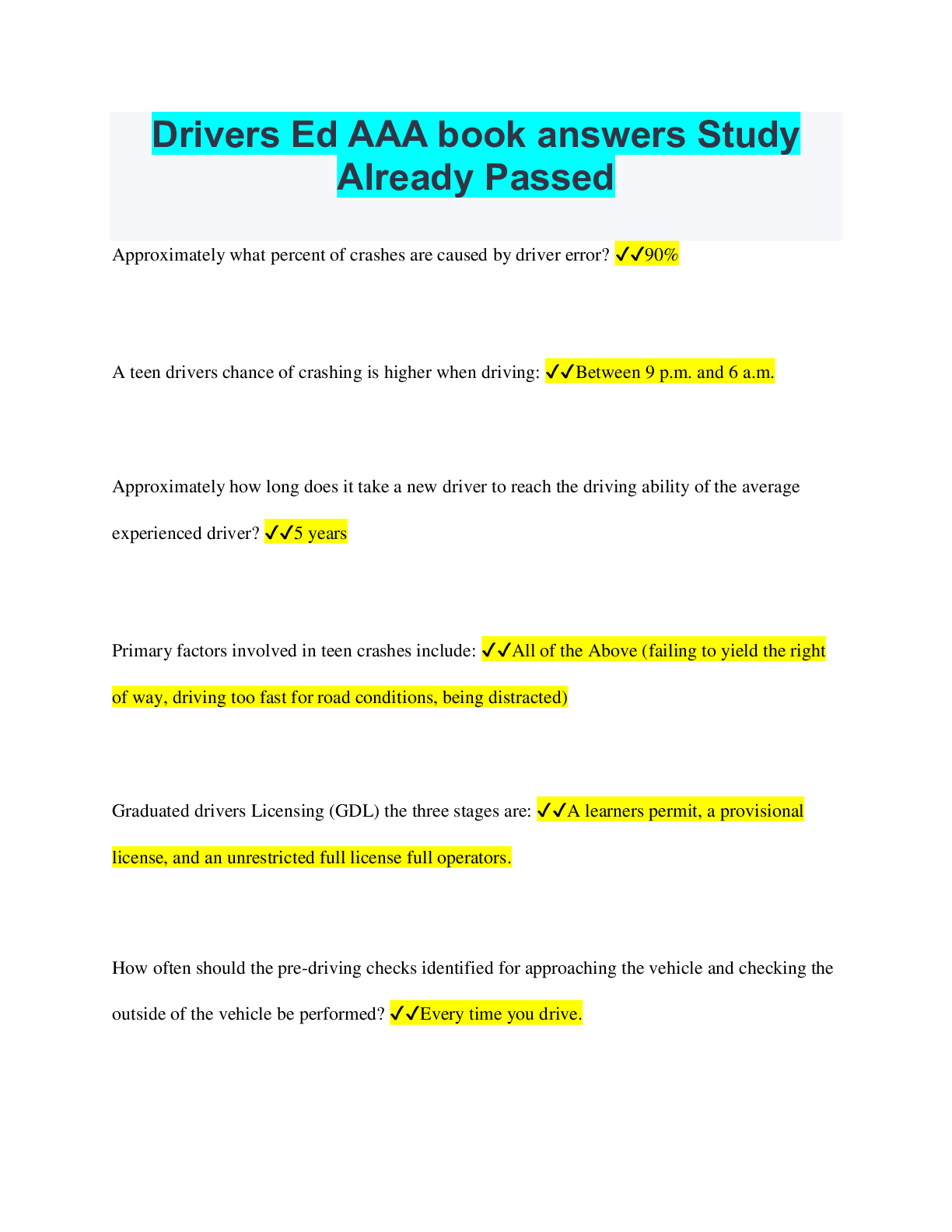
AAA Driver's ED Q's: Sample Test 1 Already Passed
$ 15.5

TEST BANK for Organic Chemistry 6th Edition by Janice Smith. ISBN-. Complete Chapters 1-29 A+
$ 9.5

85 SIE Practice Exam Questions with Correct Answers
$ 7
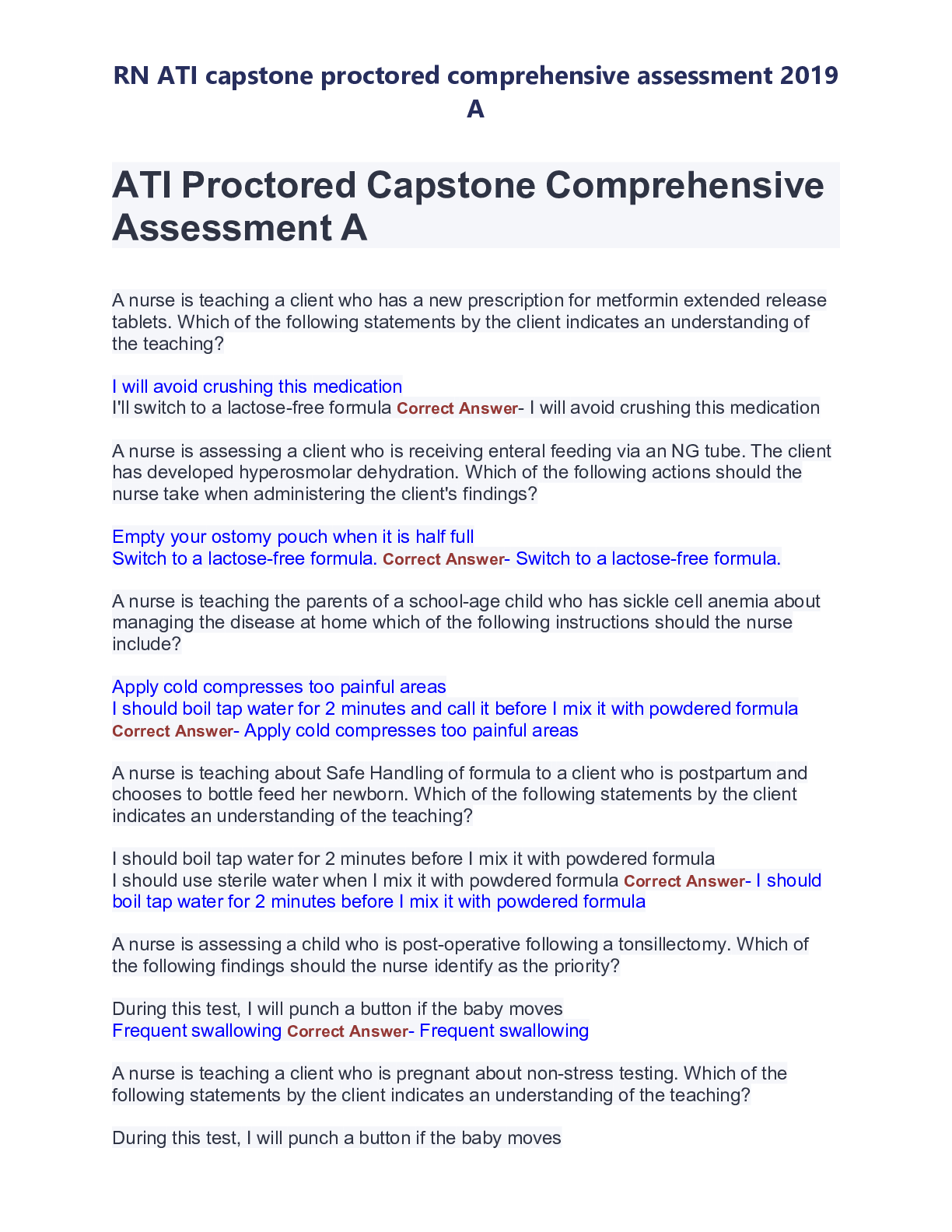
RN ATI capstone proctored comprehensive assessment 2019 A
$ 12.5

GCE Physical Education H555/01: Physiological factors affecting performance Advanced GCE Mark Scheme for November 2020
$ 7.5
.png)
RASMUSSEN PSYCHOLOGY REFLECTION ESSAY-Graded A+
$ 7
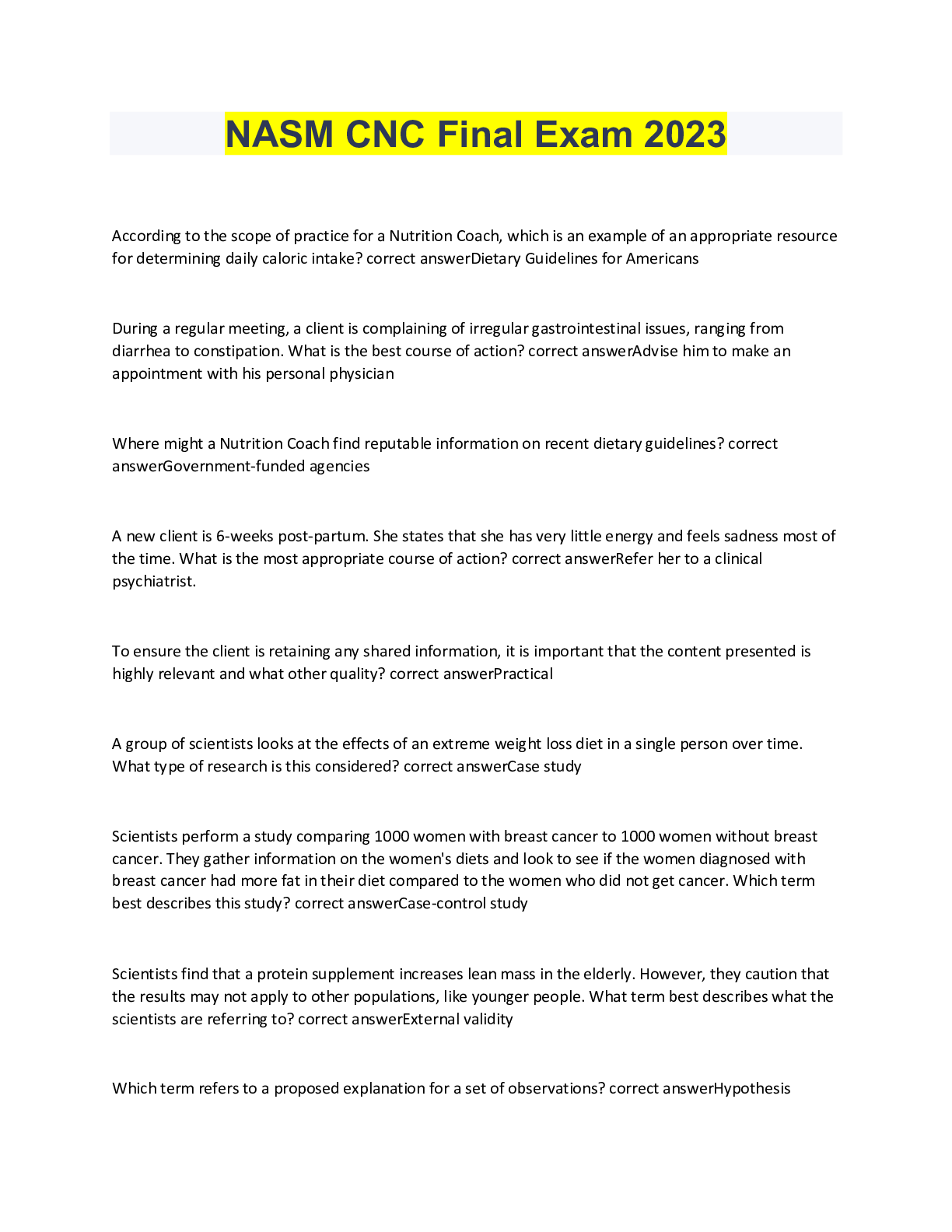
NASM CNC Final Exam 2023
$ 7
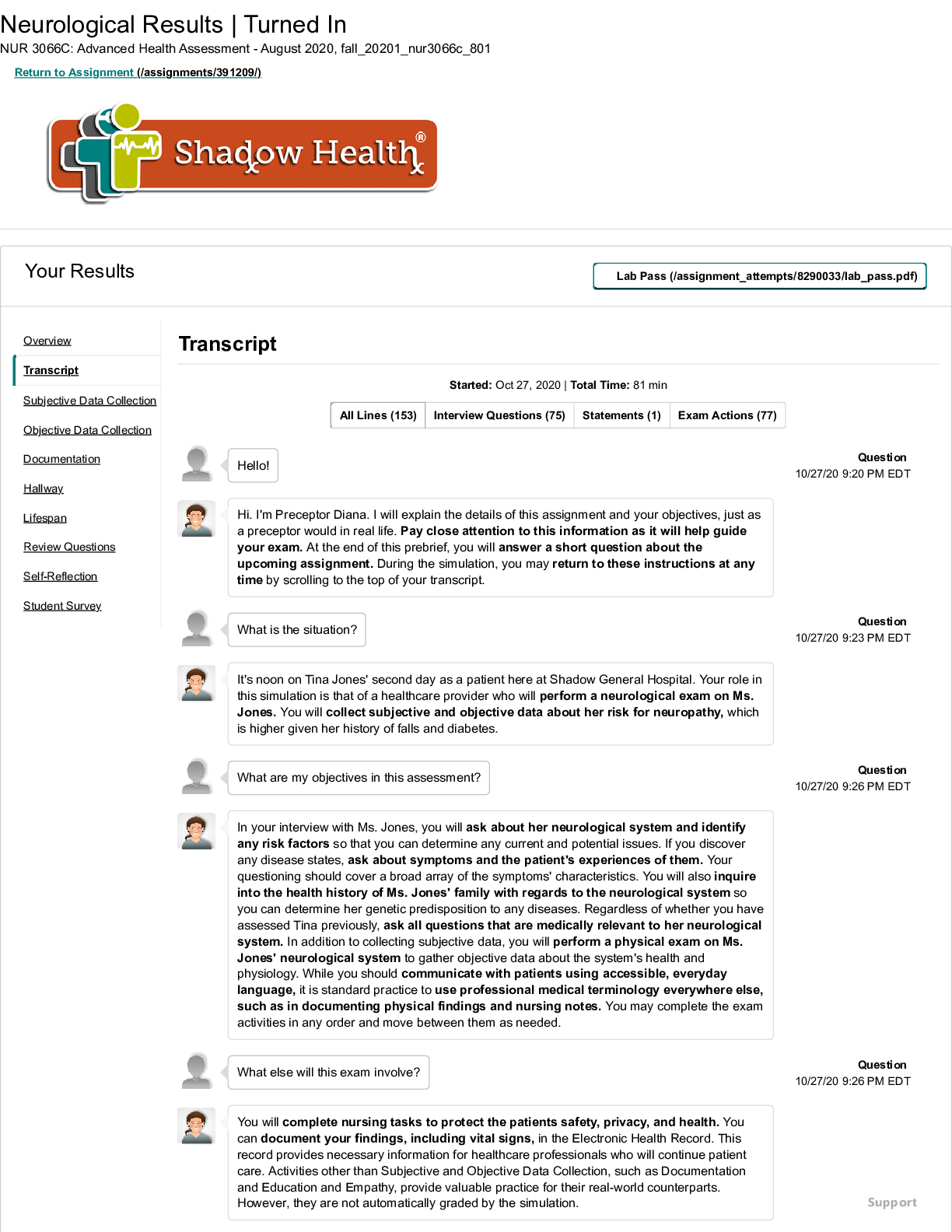
Neurological Completed Shadow Health-Transcript 2020
$ 16
.png)
PTCB Exam Latest Updated 2022 Rated A
$ 9.5
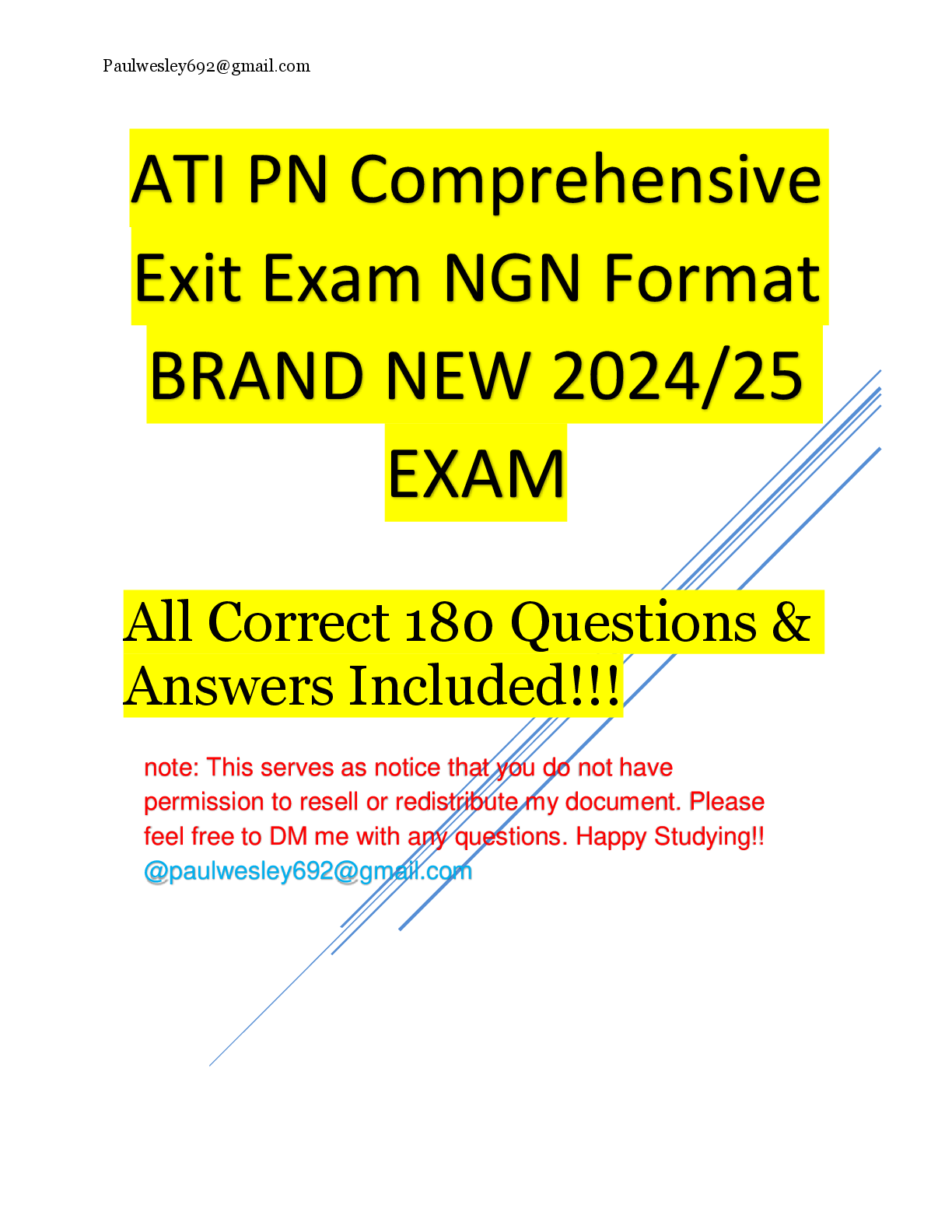
ATI PN Comprehensive Exit Exam NGN Format BRAND NEW 2024/25 EXAM
$ 15

NR.210.653 ADVANCED PRACTICE MANAGEMENT COMPLETED EXAM WITH RATIONALES 2024
$ 15

GCE Physical Education H555/02: Psychological factors affecting performance Advanced GCE Mark Scheme for November 2020
$ 7.5

eBook Discovering Human Sexuality 4th Edition By Simon LeVay, Janice Baldwin, John Baldwin
$ 29
.png)
2022 AHIP Module 5 QUIZ EXAM WITH COMPLETE SOLUTION RATED A.
$ 11
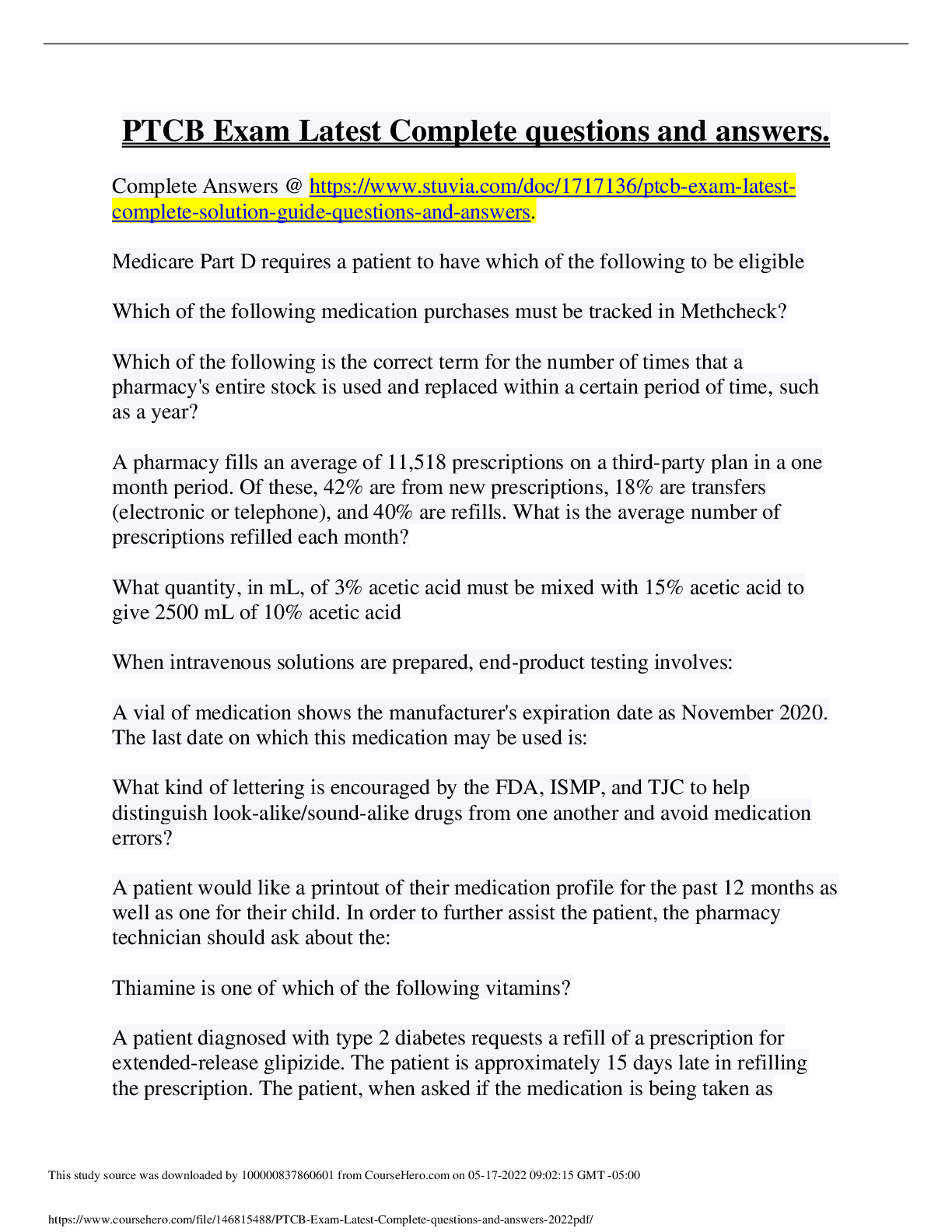
PTCB Exam Latest Complete solution guide questions and answers.2022 update
$ 11
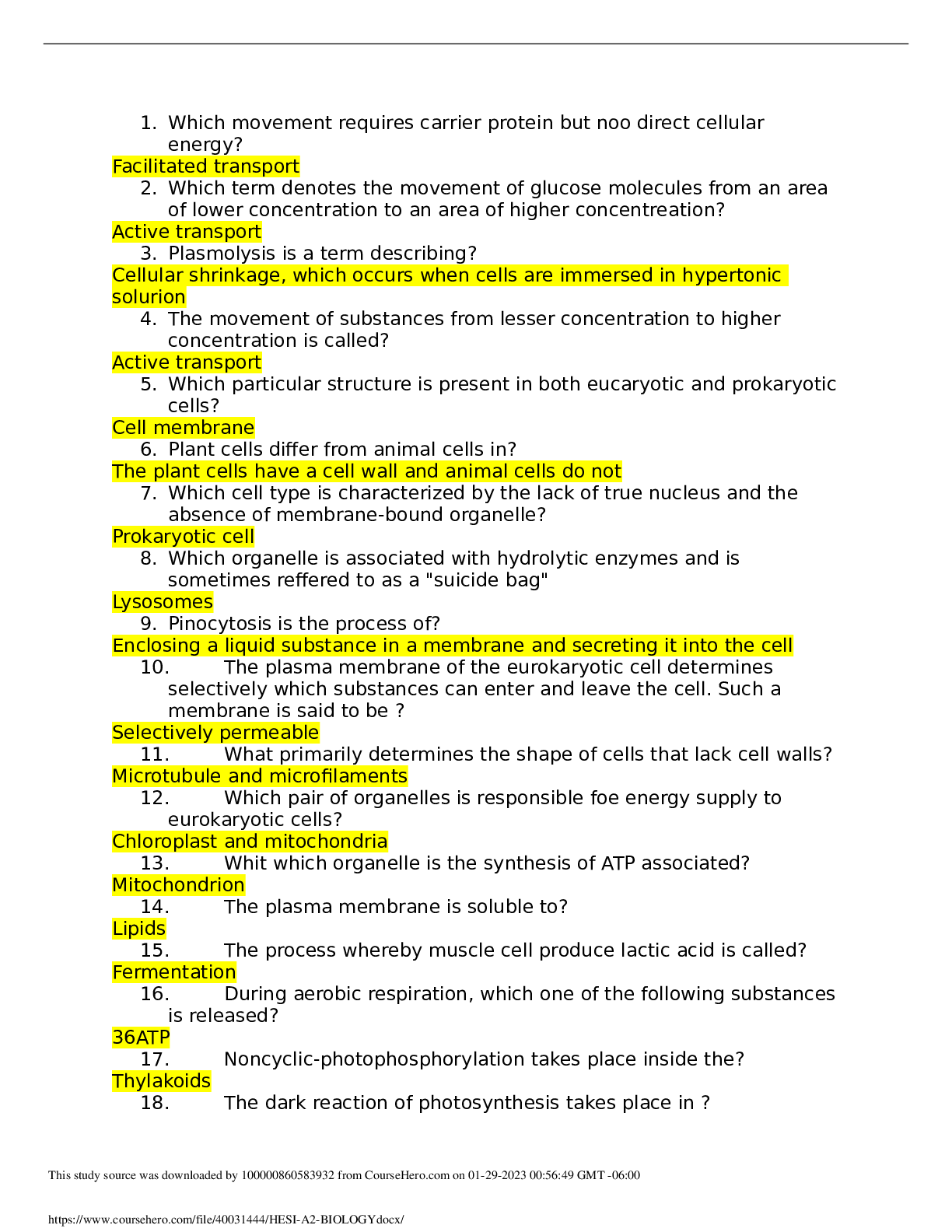
BIOLOGY MISC - HESI A2 BIOLOGY.
$ 12
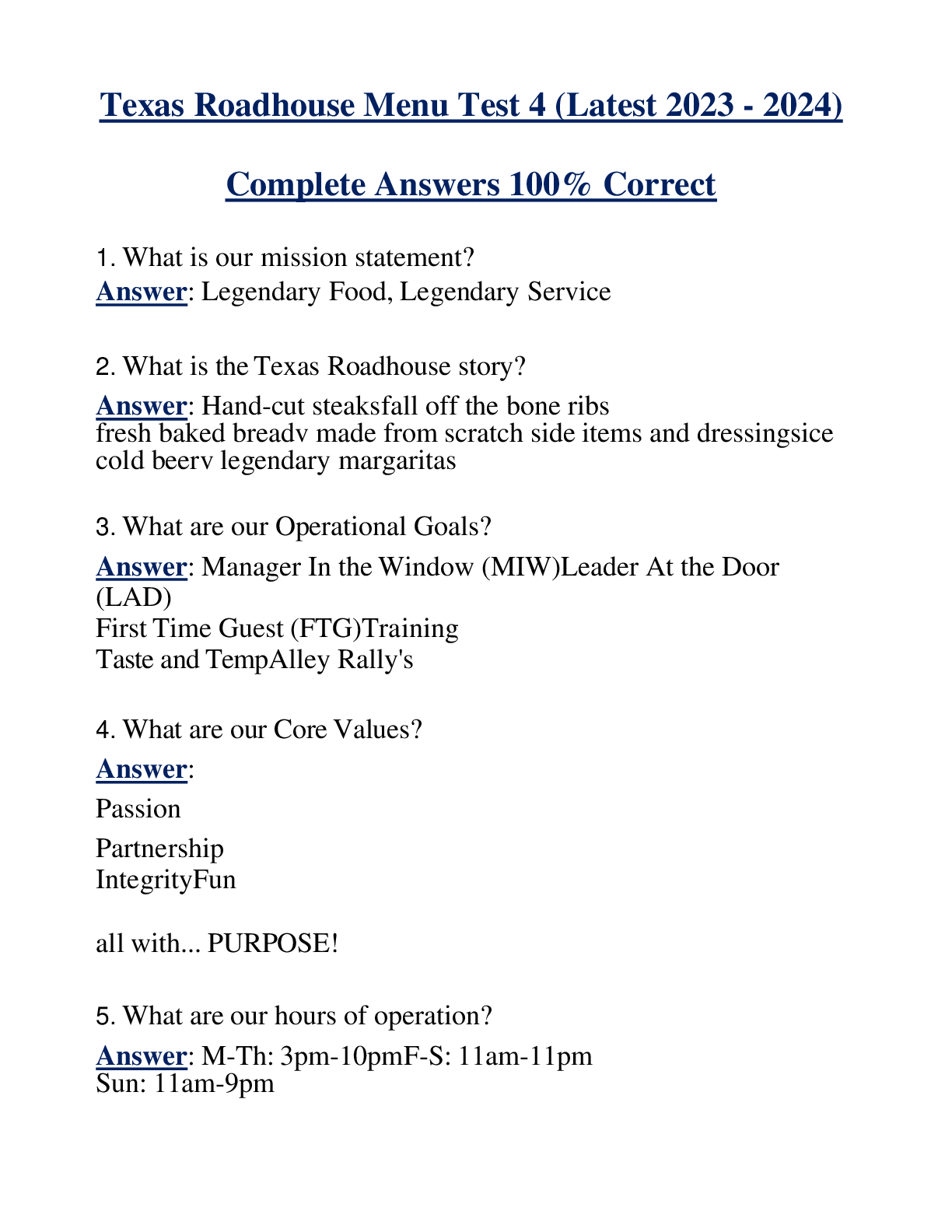
Texas Roadhouse Menu Test 4 (Latest 2023 - 2024) Complete Answers 100% Correct
$ 9

Focused Exam Schizophrenia:Education and Empathy [SOLVED]
$ 10
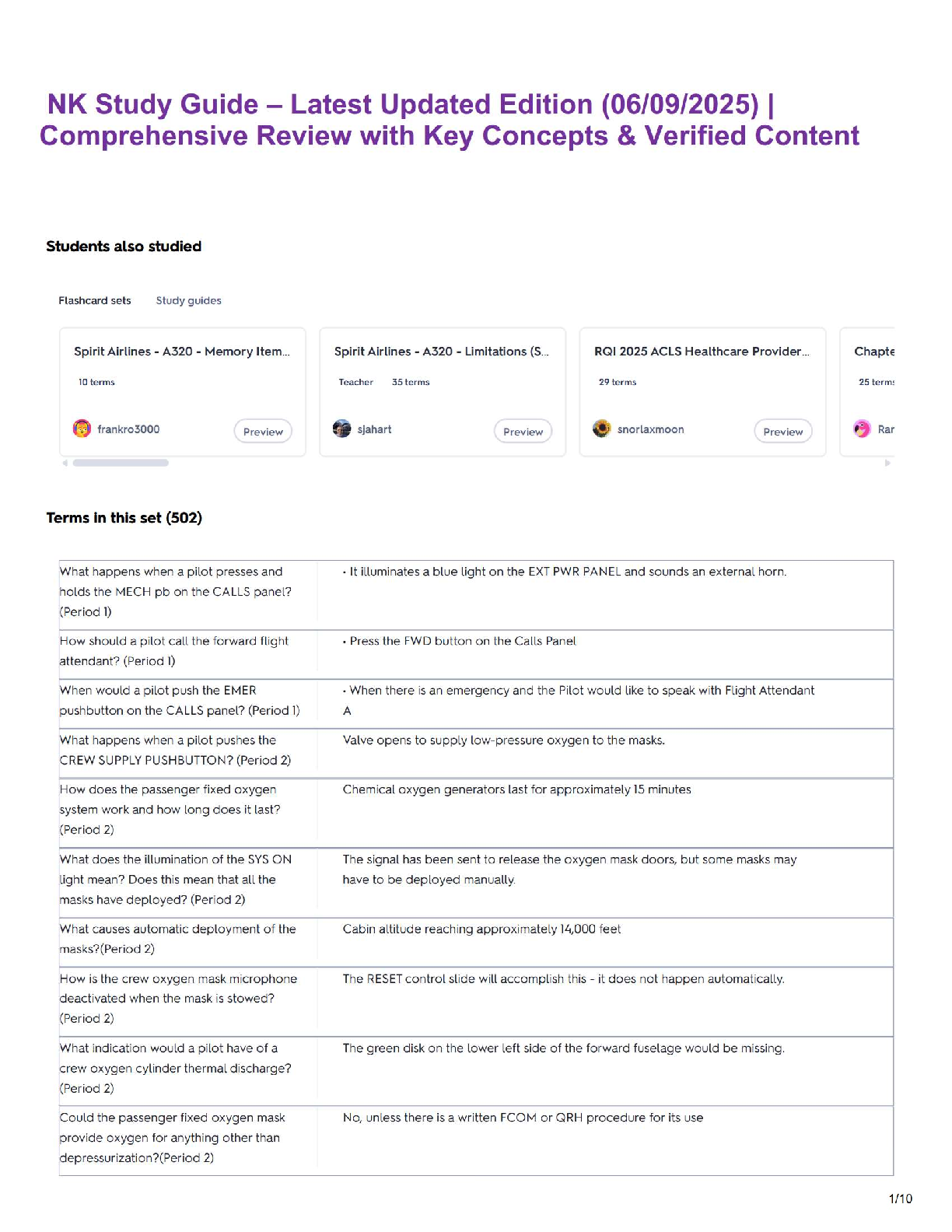
NK Study Guide – Latest Updated Edition (06/09/2025) | Comprehensive Review with Key Concepts & Verified Content
$ 14.5
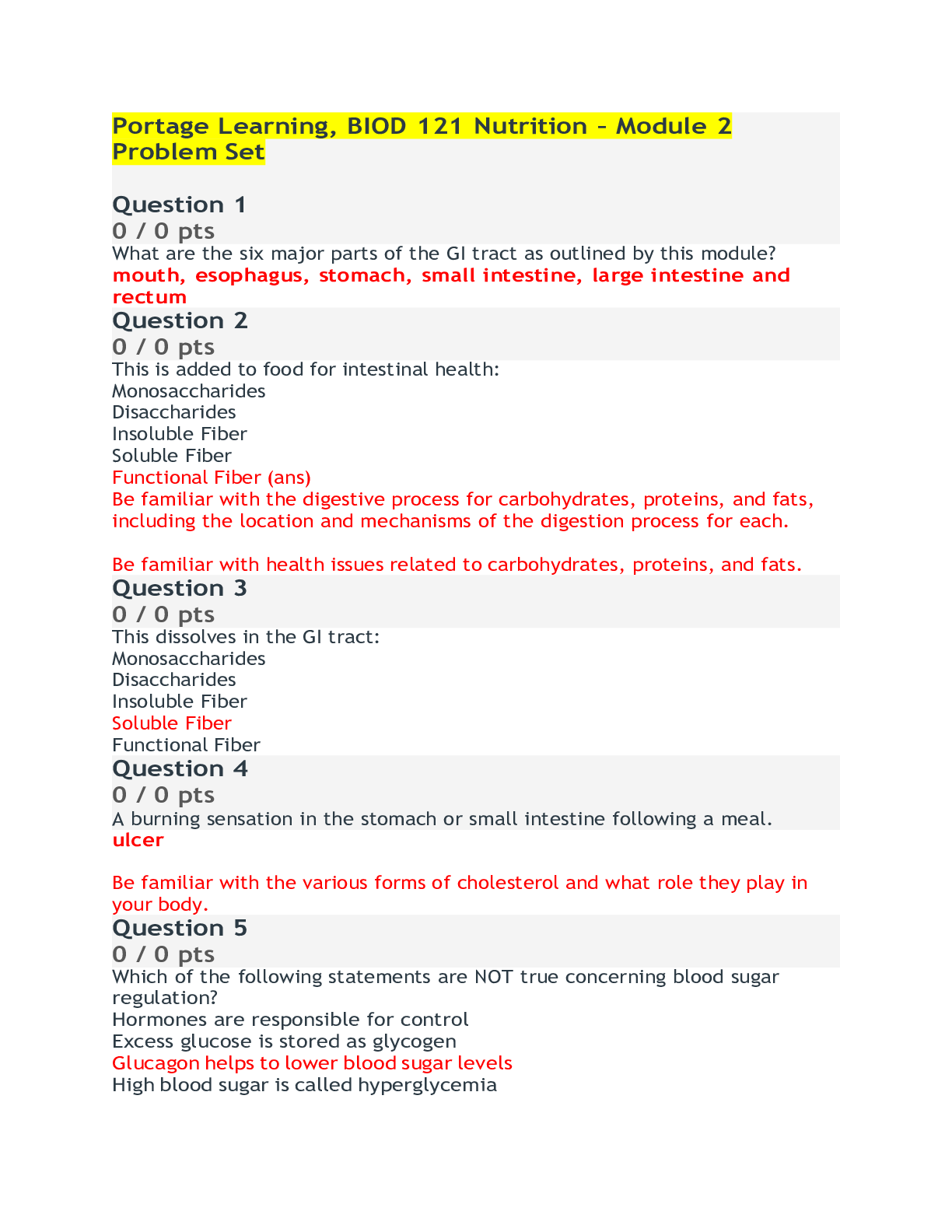
Portage Learning, BIOD 121 Nutrition – Module 2 Problem Set
$ 7
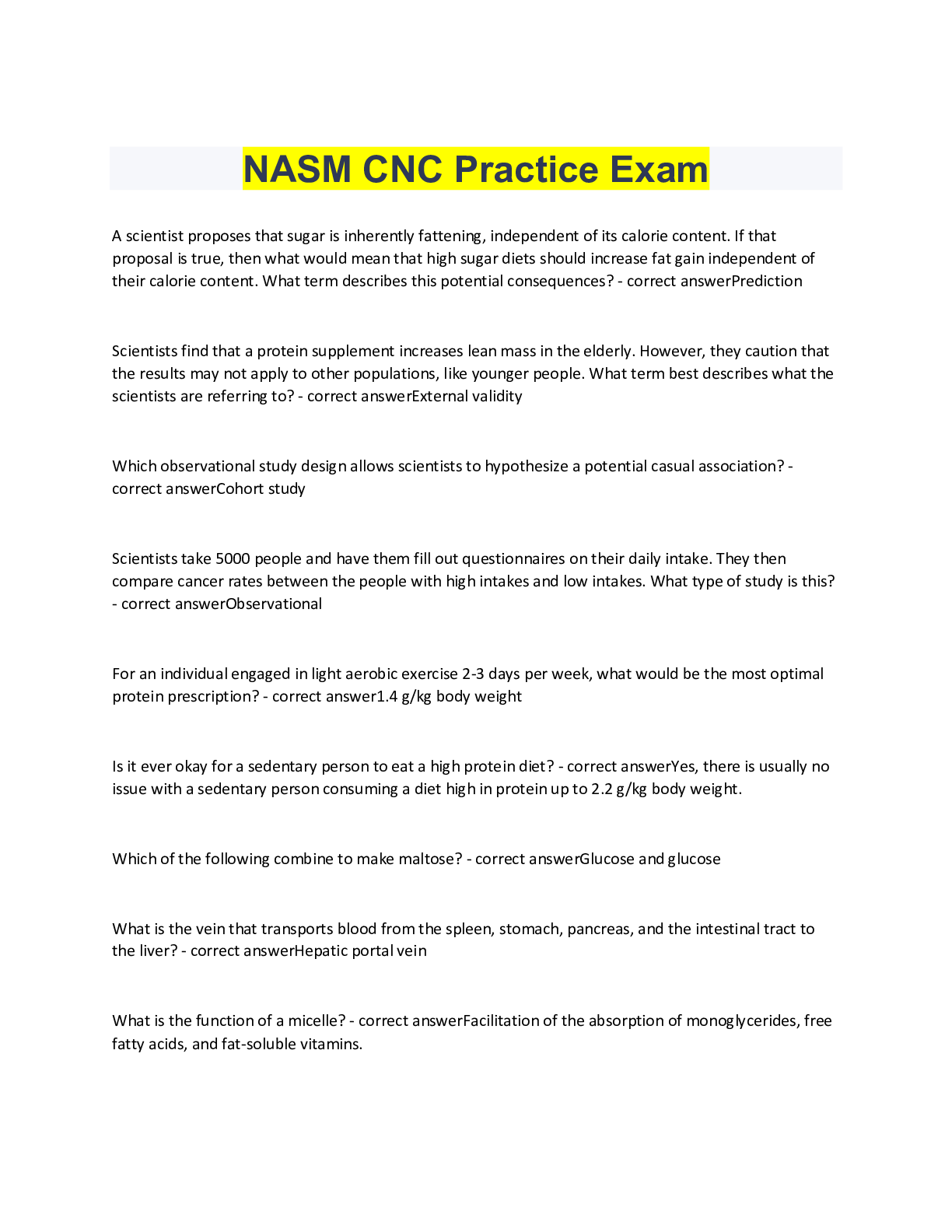
NASM CNC Practice Exam
$ 5
 With complete Solution.png)
USMLE step 2 CK (latest 2021-2022)
$ 15
.png)
WGU C202: Pre-Assessment - Managing Human Capital Latest 2022 Already Passed
$ 5
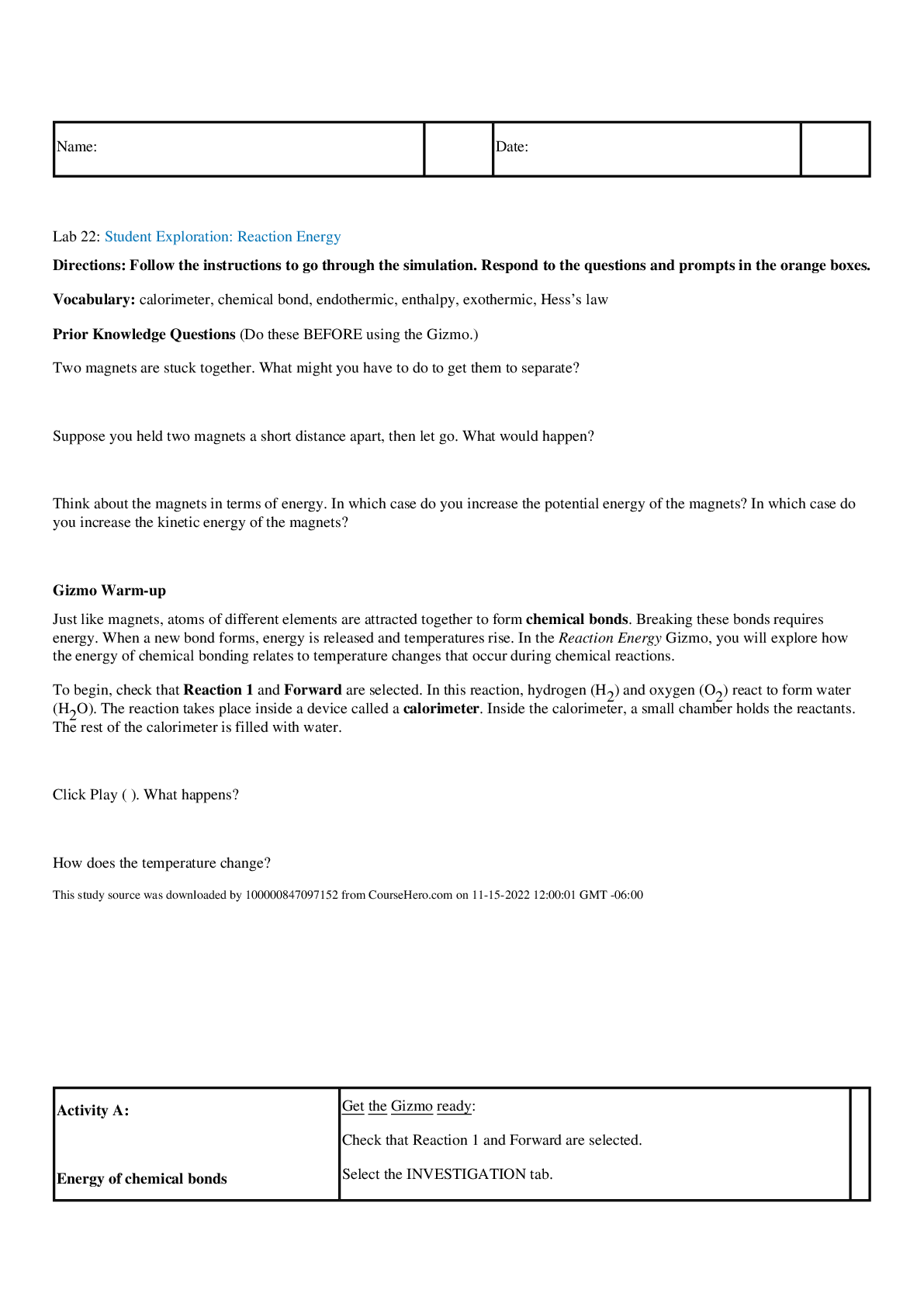
GIZMO_Reaction_Energy_Answers.pdf
$ 14

A DISSERTATION ON Qualitative Evaluation of a Hospital-Based Preceptor-Guided Clinical Orientation Program
$ 14.5

A DISSERTATION ON Qualitative Evaluation of a Hospital-Based Preceptor-Guided Clinical Orientation Program
$ 14.5
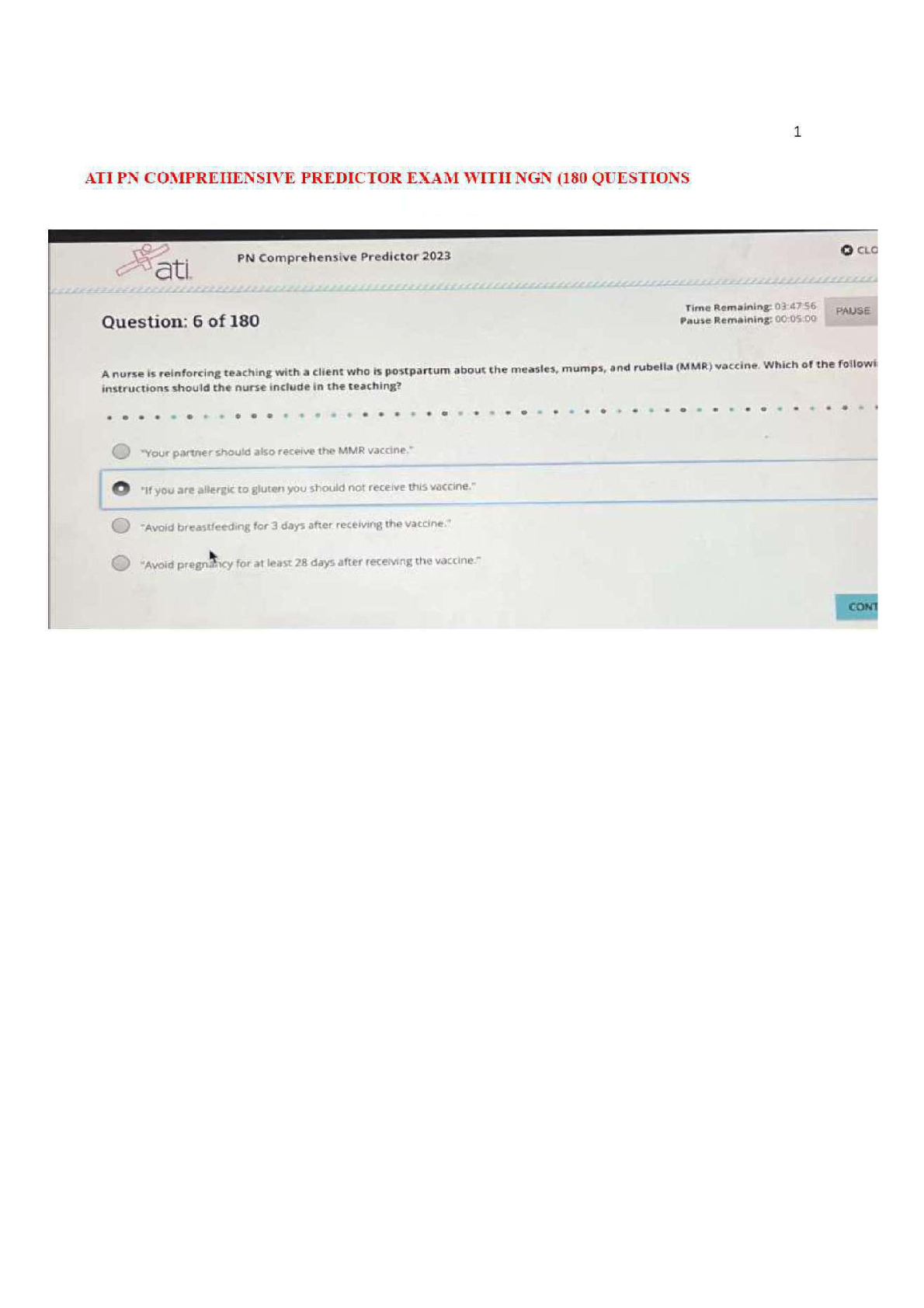
ATI PN Comprehensive Predictor Proctored Exam 2024-2025 – NGN 180 Questions & Answers (PDF)
$ 72

Texas Roadhouse Menu Test 7 (Latest 2023 - 2024) Complete Answers 100% Correct



